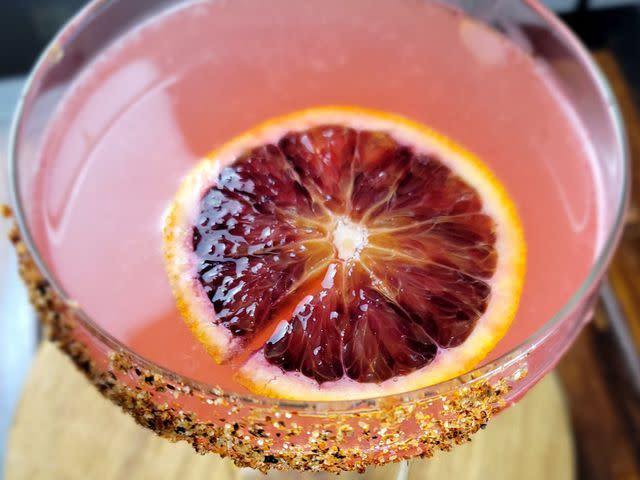What Are Cara Cara Oranges—And How Are They Different From Other Oranges?
Here's what you need to know.

Bhofack2 / Getty Images
During the dark, dreary winter months, winter citrus is always a bright spot—and one of the crown jewels of the citrus family is the Cara Cara orange. From the outside, it doesn’t look like much. But the second you peel back the fragrant skin, you’re greeted with one of winter’s most beautiful and delicious fruits.
What Are Cara Cara Oranges?
Put simply, Cara Cara oranges are navel oranges. However, Cara Caras are smaller than the navels you probably know and love, with thinner skin and pinker flesh. They are prized for their explosive sweetness and fruitiness akin to raspberries that surpass most navel oranges.
They are a favorite among chefs not only for their flavor, but for the high visual impact their salmon-pink interior provides.
Cara Cara oranges were initially bred in Venezuela, but most are grown in California these days.
Cara Caras are in season in the winter: They may start to show up at farmers’ markets and grocery stores as early as December and as late as April, but they’re at their peak in January and February.

Bill Boch
What Do Cara Cara Oranges Taste Like?
You might be wondering what makes these seemingly regular-looking oranges so special—with one bite, you’ll know. Cara Cara oranges are less acidic and much sweeter than most other varieties of oranges. This combination makes them extra orange-y (some people say they taste like orange candy). Their dynamic flavor is often described as a cross between a very sweet orange and berries, usually raspberry or blackberry. The pith is also thinner, so they’re less bitter and taste juicier.
Cara Cara Oranges vs. Blood Oranges
You might confuse Cara Cara oranges with blood oranges, given their brilliant coral hue, but they are distinctly different fruits. Here are some notable differences:
The interior of a blood orange can range from a dark red to a deep maroon-purple, while a Cara Cara’s fruit is more of a true orange to coral.
Blood oranges get their dark, saturated color from anthocyanins, the same antioxidant compound that turns raspberries red. Cara Cara’s unique grapefruit-esque coloring comes from lycopene, another antioxidant similar to beta-carotene.
Blood oranges can be mutations of navel or Valencia oranges, but Cara Caras are a variation of navel oranges exclusively.
Both share a reputation for high-impact color and flavor. However, blood oranges are more widely used in sweet and savory recipes, while Cara Caras are used more on the sweet side.

How to Store Cara Cara Oranges
Winter citrus loves a cool, dry climate—and Cara Cara oranges are no exception. You can keep them on the counter (out of direct sunlight and away from heating vents) for one to two weeks.
For longer storage, around a month or so, opt for the crisper drawer in your fridge. If you choose to keep them refrigerated, just make sure to bring them to room temperature before eating or using them to cook. Lower temperatures can mute the nuanced flavors and all citrus produces more juice at room temperature.
The peel and pith of Cara Caras are thinner than a navel or Valencia orange, so they’re more delicate and less insulated. This, combined with their extra juiciness, means they should be handled carefully. Bruising can lead to soft spots and spoilage.
What to Do With Cara Cara Oranges
The best thing you can do with Cara Cara oranges is eat them right out of hand! However, if you want to do a bit more with them, Cara Caras are great for cooking and baking.
Try the zest and juice in a vinaigrette with whole grain mustard, white wine vinegar, and some good olive oil; perfect for dressing a salad of bitter winter greens like endive and radicchio.
Cara Cara's big juicy flavor also makes them perfect for orange cake, especially when it comes to the glaze. Cara Caras are naturally very sweet, so they’re perfect for sorbet, custards, and even cheesecake. Feature them on center stage in an orange and fennel salad, ideal on the side of roasted and charred meats. Cara Caras have a more saturated flavor than most other oranges, so reach for them when you want a more prominent orange flavor.
Read the original article on All Recipes.

